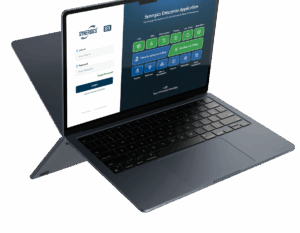Financial reporting is a crucial aspect of managing a business’s finances, providing stakeholders with accurate and timely information about its financial performance and position. This blog will explore the key components of financial reporting, including financial statements, financial statement software, and financial reporting systems. We’ll also delve into examples and templates for financial statements and discuss the role of financial accounting in effective reporting.
Understanding Financial Statements
At the heart of financial reporting are financial statements, which summarize a company’s financial activities over a specific period. These documents provide insights into the company’s financial health and are essential for decision-making. The primary types of financial statements include:
- Income Statement Example: Also known as the profit and loss statement, the income statement shows a company’s revenues, expenses, and profits over a specific period. It’s used to assess the company’s operational performance and profitability. For instance, an income statement example might detail revenue from sales, cost of goods sold, gross profit, operating expenses, and net income.
- Business Balance Sheet: The balance sheet provides a snapshot of a company’s assets, liabilities, and equity at a specific point in time. It helps in understanding the company’s financial position and solvency. An effective business balance sheet displays total assets, total liabilities, and shareholders’ equity.
- Financial Statement Example: This term encompasses various documents, including the income statement, balance sheet, and cash flow statement. Each financial statement example provides unique insights into different aspects of the business’s financial health.
Utilizing Financial Statement Software
Managing financial reporting efficiently requires the right tools. Financial statement software and financial reporting software streamline the process of creating, managing, and analyzing financial statements. Key benefits include:
- Automated Reporting: Financial statement software automates the generation of financial statements, reducing manual effort and minimizing errors. This software often integrates with other business systems to pull data and generate reports in real time.
- Customizable Templates: Many financial reporting systems offer customizable templates for various financial statements. A financial statement template can be tailored to fit the specific needs of the business, ensuring that all necessary information is included.
- Analysis Tools: Financial statement software often includes analytical tools to help interpret the data. Financial statement analysis features allow users to examine trends, ratios, and other key metrics to gain insights into the business’s performance.
- Integration Capabilities: Financial reporting systems can integrate with other business software, such as accounting and ERP systems, to ensure that financial data is accurate and up-to-date.
Creating Effective Financial Reports
When preparing financial reports, it’s essential to use accurate data and present it clearly. Here’s how to create effective financial reports:
- Data Accuracy: Ensure that the data used in financial statements is accurate and up-to-date. This involves regular reconciliation of accounts and verification of financial transactions.
- Clear Presentation: Use clear and concise formats for presenting financial statements. Financial report examples often include charts, graphs, and tables to make the information more digestible.
- Regular Updates: Update financial reports regularly to reflect the latest financial data. This helps stakeholders make informed decisions based on current information.
- Compliance: Ensure that all financial statements comply with relevant accounting standards and regulations. This is crucial for maintaining transparency and credibility.
Exploring Financial Statement Examples
Understanding financial statement examples can provide valuable insights into how to structure and present financial information. Examples include:
- Income Statement Example: Shows detailed revenue and expense categories, providing a clear picture of profitability.
- Business Balance Sheet: Displays assets, liabilities, and equity, illustrating the company’s financial stability.
Leveraging Financial Accounting
Financial accounting plays a vital role in financial reporting by tracking and recording financial transactions. It provides the foundation for generating accurate financial statements and reports. Key aspects of financial accounting include:
- Transaction Recording: Accurate recording of financial transactions is essential for generating reliable financial statements.
- Account Reconciliation: Regular reconciliation of accounts ensures that the financial data is correct and up-to-date.
Choosing the Right Software
Selecting the right software to create financial statements is crucial for efficient financial reporting. Consider the following features when choosing financial statement software:
- Ease of Use: The software should be user-friendly and intuitive.
- Customization: Look for financial statement software that allows customization of reports and templates.
- Integration: Ensure compatibility with other business systems for seamless data integration.
Conclusion
Effective financial reporting is essential for understanding and managing a business’s financial health. By utilizing financial statement software, adhering to financial reporting guidelines, and leveraging financial accounting principles, businesses can produce accurate and insightful financial statements. Whether you’re using financial reporting systems or exploring financial statement examples, the goal is to ensure transparency, accuracy, and informed decision-making in all financial matters.













